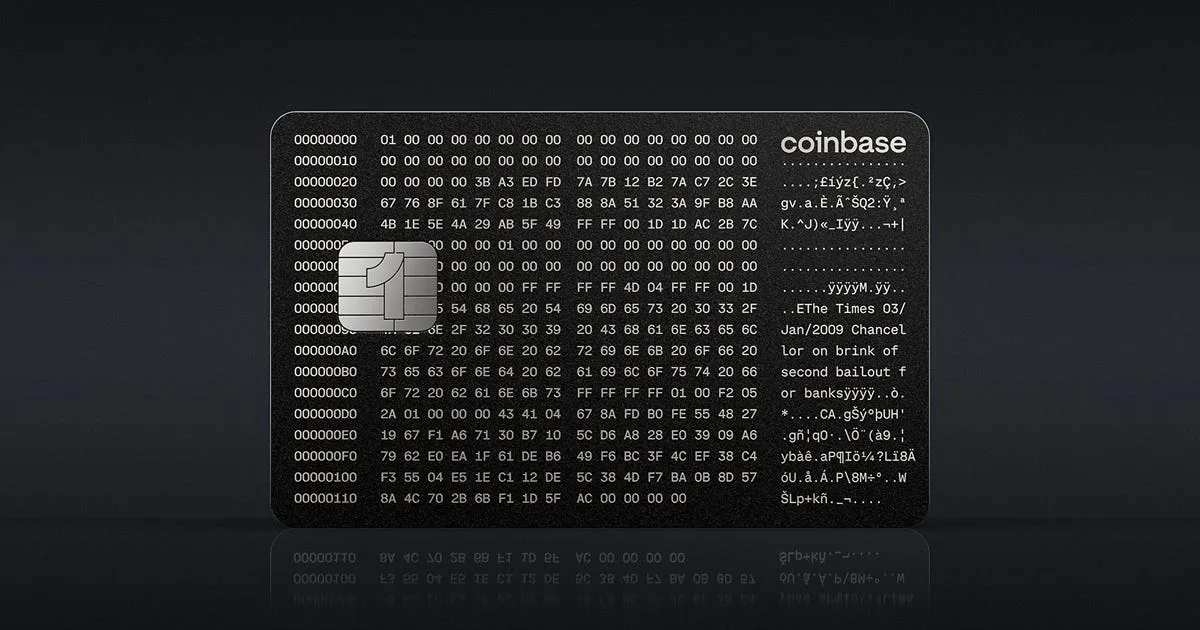
Dear Founders, Investors, and Friends,
While the Middle East tensions kept investors on the edge, June was packed with big acquisitions, regulatory progress, and technological advancements. All developments that continue to bridge the gap between Wall Street and the crypto ecosystem.
So, without further ado, let's dive into last month's most important stories.
Stripe Builds Its Crypto Infrastructure Stack
Stripe made its second big crypto move this year, acquiring wallet infrastructure provider Privy. Coming just months after their $1.1 billion Bridge purchase in October, this signals Stripe is methodically building a complete stack for internet-native money.
The logic behind the combination is compelling. Bridge handles the money movement layer, letting businesses send stablecoins easily across borders. Privy solves the equally critical custody challenge, giving users a place to hold and manage those digital assets without the need for an own wallet. More importantly: It lets users create wallets using familiar Web2 methods like email, while all the blockchain complexity gets handled behind the scenes.
Since launching in 2021, Privy has been quietly winning over crypto developers. Their embedded wallet SDK now powers over 75 million wallets across 1,000 teams.
The acquisition creates powerful synergies for Stripe's broader strategy. Merchants can now seamlessly offer crypto wallets directly to customers. Consumer fintech apps can embed stablecoin functionality via Stripe's APIs. Even gig platforms can hold and manage balances for freelancers without taking on the regulatory burden of becoming financial institutions themselves.
Let’s see what other use cases might emerge going forward.
U.S. Senate Advances the GENIUS Act
Washington is taking notice. In May, the U.S. Senate advanced the GENIUS Act, a bipartisan bill creating the first federal framework for payment stablecoins.
The bill mandates full reserve backing (cash, Treasuries, repos), issuer registration with the Fed or OCC, and introduces a threshold system: firms with under $10 billion in circulation may operate under qualifying state regimes, while larger players fall under federal oversight. It also prohibits stablecoins from sharing yield with retail users — a clause critics argue protects banks, not consumers.
It also includes a controversial carve-out: the bill exempts the sitting President and Vice President from the issuer restrictions — a provision that effectively allows politically affiliated initiatives, such as Liberty Financial’s USD1, which is linked to the Trump family, to proceed without constraint.
Now, how does GENIUS differ from the EU's MiCA? Mainly by being more issuer-friendly. Under MiCA, "significant" stablecoin issuers must keep up to 60% of reserves in commercial bank deposits, restricting access to higher-yielding assets like Treasuries and cutting into their revenues. Further, some argue this approach concentrates run risks on commercial banks during periods of large-scale redemptions.
Still, the GENIUS Act isn’t final. Further revisions are expected, and it must be reconciled with the House’s Stable Act before reaching the President’s desk and ultimately become law.
Mastercard Embraces Onchain Payments
In another headline, Mastercard and Chainlink teamed up to launch a new DeFi app called Swapper Finance. It enables users to purchase tokens directly on decentralized exchanges using traditional Mastercard transactions, without the need to navigate centralized exchanges or complex onramping processes.
While players like Visa and Mastercard have been experimenting with crypto for years, only now are we seeing concrete product launches that actually matter. But what changed? Well, regulation. Companies that were once cautious about compliance can finally move from pilot programs to real deployments. With the current momentum building across traditional finance, expect to see much more of this in the coming months as other payment giants follow suit.
Coinbase Announces Major Product Updates
At its State of Crypto Summit in New York, Coinbase unveiled a comprehensive product suite and strategy that spans both institutional and consumer adoption.
On the business side, they launched Coinbase Business, an all-in-one platform for companies looking to integrate crypto into daily operations. Early access users can make stablecoin payments to vendors and employees, earn yield on idle balances, and connect directly with accounting tools.
For consumers, they revealed the Coinbase One Card, offering up to 4% Bitcoin cashback via the American Express network. The card launches this fall and represents Coinbase's push into traditional fintech territory, competing directly with traditional providers and existing crypto cashback offerings.

Perhaps most interestingly, Coinbase announced native DEX integrations within its Coinbase app, allowing users to swap onchain assets without needing self-custodial wallets. Combined with their recently launched Bitcoin lending product, this shows how Coinbase is quietly bringing DeFi functionality to mainstream users through familiar interfaces — thereby also increasing activity on their Base Layer 2.
Beyond that, the exchange is entering a new market. Starting July 21st, Coinbase will allow its U.S. customers to trade Perpetual Futures for the first time.
Coinbase's growing product suite reflects the exchange's evolution from a simple trading platform into something much more ambitious. The company is essentially monetizing its own operational backbone — all the custody systems, payment rails, and treasury infrastructure it developed internally are now being packaged as services for other businesses.
It's reminiscent of how Amazon transformed its internal logistics and cloud infrastructure into AWS, creating an entirely new revenue stream. And now Coinbase appears to be betting that becoming the pick-and-shovel provider for crypto adoption will be more valuable than just facilitating trades.
Coinbase and Shopify Reinvent Crypto Payments
One of the month's clearest signals that stablecoins are hitting the mainstream came from Fiserv's announcement of FIUSD. While the company isn’t well-known by the general public, it’s one of the largest fintech infrastructure providers in the U.S., powering payment processing and banking services for 10,000 financial institutions and millions of merchants.
According to Fiserv, the company has been watching crypto from the sidelines for years, but needed regulatory clarity before making any big moves. The recent momentum around the GENIUS Act finally gave them the green light they were waiting for. Now they're moving fast to catch up.
With FIUSD, Fiserv doesn't want to compete with other issuers and stablecoins. Instead, it wants to use the technology to provide its institutional customers easy access to stablecoin functionality and its benefits — which they, in turn, can offer their own customers via Fiserv's infrastructure.
The technical setup makes this particularly powerful. Fiserv is partnering with Paxos, which also powers PayPal's PYUSD, creating seamless interoperability between the two stablecoins. This means users could transfer funds between traditional bank accounts and PayPal wallets without friction, exactly the kind of cross-platform functionality that could drive real adoption.
But the move isn't just about stablecoins either. Fiserv sees this as its entry point into programmable payments, tokenized deposits, and real-world assets. Essentially, it wants to retrofit the infrastructure it's built for traditional finance to work with the onchain economy. If it proves to be successful, it will be a huge win for the crypto industry.
JPMorgan Brings Bank Money Onchain
The most important institutional milestone this month came from JPMorgan.
The bank launched JPMD — a deposit token — on Coinbase’s Base network, marking the first time a systemically important bank issued such a product on a public blockchain.
But why even tokenize bank deposits instead of launching an own stablecoin? Well, regulatory context is key here. With the recent passage of the GENIUS Act in the U.S. Senate, stablecoin issuers are now explicitly barred from sharing yield with users. In contrast, banks issuing deposit tokens fall under existing banking regulations and can continue to distribute interest, making products like JPMD increasingly attractive to institutions seeking compliant, yield-bearing onchain cash alternatives.
Initially, access will be limited to JPMorgan’s institutional clients, targeting use cases like cross-border payments, digital asset settlement, and onchain liquidity management.
While the launch remains a pilot and some technical questions persist, the move offers a clearer view of where digital money is headed: tokenized deposits may become the preferred solution for banks and financial institutions, while stablecoins are likely to primarily serve fintechs, wallets, and consumer-facing apps.
Portfolio Update

In June, we announced one of our recent rounds. Alongside our partners at Greenfield, we invested in the €1.6 million pre-seed round of Rebind.
In short, Rebind is building a product that wants to deliver a "Jony Ive Moment" for crypto — making DeFi more accessible through a strong focus on user-friendliness.
To get more insights into our investment thesis behind Rebind, see the blog post by our Associate Leonard Lang.
Blockwall at DappCon VC Day in Berlin

Blockwall, represented by our Investment Manager Max Schneider, supported the inaugural DappCon VC Day.
The event brought together a vibrant group of founders and investors, and was filled with high-quality pitches across exciting Web3 verticals, from prediction markets to stablecoins and payments.
We kicked off with a unique reverse pitch from the VCs, giving founders insight into who they were speaking with and what each fund brings to the table. It was a great format that encouraged more meaningful conversations throughout the day.
Congratulations to the winners! The innovation and talent on display were truly impressive.
Successful SuperReturn Side-Event

During SuperReturn and SuperVenture, we hosted another successful LP and GP gathering, bringing together friends from across the venture ecosystem.
This year, we expanded beyond our usual crypto and Web3 focus to connect networks spanning diverse verticals — from health tech and climate tech to AI, defense tech, and enterprise SaaS — with participants representing Europe, North America, and Asia.
The cross-vertical approach sparked fascinating conversations and opened new collaboration opportunities across traditionally siloed sectors. We're already planning next year's edition and looking forward to continuing these valuable connections.
Key Events of the Last Few Weeks
- Polymarket partners with X. The prediction market platform is integrating with Elon Musk's social network to combine betting data with real-time social insights. Users will see live annotations from Grok and relevant X posts alongside market movements, though specific partnership details remain undisclosed. (Source: Bloomberg)
- Walmart and Amazon explore stablecoin strategies. According to the Wall Street Journal, America's largest retailers are investigating stablecoin issuance to cut billions in credit card processing fees. (Source: WSJ)
- Texas establishes Bitcoin reserve. Governor Greg Abbott signed legislation creating a publicly funded Bitcoin reserve, separate from the state's main treasury. Texas appropriated $10 million to kickstart the program, joining a growing list of U.S. states embracing crypto as a strategic asset. (Source: Axios)
- SoFi launches comprehensive crypto features. The $25 billion Nasdaq-listed fintech will enable its 10+ million users to receive paychecks in stablecoins, make cross-border blockchain transfers, and access onchain rewards. (Source: SoFi)
- Bybit builds onchain ecosystem on Solana. The world's second-largest crypto exchange unveiled a suite of Solana-based products, including Byreal DEX, Revive Vault for enhanced SOL staking yields, and Reset Launch token launchpad. The move reflects centralized exchanges' push into DeFi territory. (Source: Blockworks)
What We’ve Been Reading
- Coinbase's State of Crypto Q2 2025 — An analysis of cryptocurrency adoption trends among enterprises, small businesses, and institutional players, with particular emphasis on the accelerating growth in stablecoins and real-world assets.
- The Legacy Payment Model's Reckoning with Stablecoins (Rob Hadick) — Dragonfly's Rob Hadick makes the case that stablecoins represent more than integration with existing payment infrastructure, they signal its replacement. Through direct ledger-to-ledger transfers, stablecoins promise to streamline the entire payment stack and catalyze next-generation fintech solutions.
Disclaimer
To avoid any misinterpretation, nothing in this blog should be considered as an offer to sell or a solicitation of interest to purchase any securities advised by Blockwall, its affiliates or its representatives. Under no circumstances should anything herein be interpreted as fund marketing materials for prospective investors considering an investment in any Blockwall fund. None of the data and information constitutes general or personalized investment advice and only represents the personal opinion of the author. The author and/or Blockwall may directly or indirectly be exposed to the mentioned assets/investments. For further information please view the full Disclaimer by clicking the button below.
This work is licensed under the Creative Commons Attribution – No Derivatives 4.0 International License. CC BY-ND 4.0 Legal Code | Creative Commons